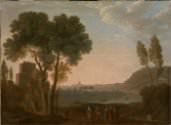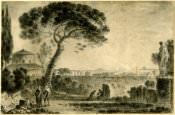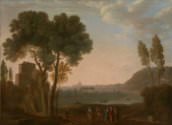John Plimmer
John Plimmer
John Plimmer was baptized in the parish church of St. Peter’s, Dorchester, on July 3, 1722, where his father, Thomas, had married the previous year. In 1736, Plimmer was apprenticed to the master-builder Francis Cartwright of Blandford, Dorset. Virtually nothing else is known about Plimmer until he arrived in Rome in 1755, when he was described as a “Painter & Sculptor.” There, he studied landscape painting under Richard Wilson and made copies of a number of his drawings of Rome. Plimmer was on very close terms with Wilson, Thomas Jenkins, and Robert Crone, who were described by the artist Jonathan Skelton as “like one Person.” Plimmer, like Wilson and Crone, also made life drawings at the Accademia del Nudo, Rome. In 1757, Plimmer visited Naples, but was back in Rome the following year, when he lodged in Jenkins’s house on the Corso. Jenkins, who promoted Plimmer following Wilson’s departure from Rome, described him to Henry Hoare in 1759 as “without comparison the best Landskip Painter we have at this time in Italy and is allowed to be such by all the Dilletanti [sic] here.” Plimmer and Wilson both emulated the great seventeenth-century painter Claude Lorrain. Indeed, in June 1759, Plimmer wrote to his patron Henry Hoare: “I have endeavoured to imitate Claude and Nature with as much care as I possibly could ever since Mr. Wilson left Rome and I have been my own master.” In July 1760, Plimmer dispatched to Henry Hoare at Stourhead a copy he had made after Claude, identified as the Procession to the Temple of Apollo at Delos (Stourhead, Wiltshire). Plimmer’s untimely death in Italy later that year, at the age of thirty-eight, was reported by Jenkins on November 1760.


